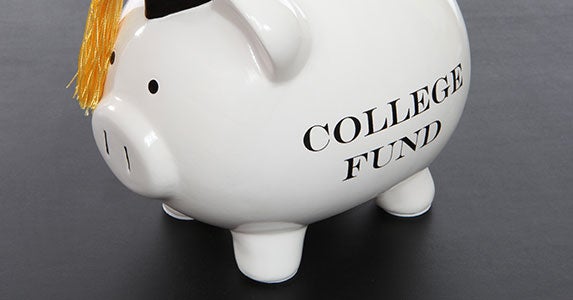The 5 fastest ways to repay your college loans





Getting out from under college loan debt

If there's one obstacle that prevents most millennials from investing either independently or with a financial adviser, it's the burden of college loans. These loans weigh down graduates, preventing them from seizing new financial opportunities until they clear their debt. In 2012, the Federal Reserve Bank of New York reported that the average outstanding student loan balance was $24,301, with 10 percent of borrowers owing more than $58,000.
So how can you get out from under that debt quickly? We spoke to investment managers and financial planners for their top tips to become free of that student loan. While they may be faster, some will definitely not be cheaper -- at least initially. But all are worthwhile in the end.
So how can you get out from under that debt quickly? We spoke to investment managers and financial planners for their top tips to become free of that student loan. While they may be faster, some will definitely not be cheaper -- at least initially. But all are worthwhile in the end.

If you can afford it, treat the loan like a mortgage and simply make larger payments to reduce the principal more quickly, says financial planner Allan Katz, CFP, president of Comprehensive Wealth Management Group in New York's Staten Island.
For example, a $25,000 student loan with 6.8 percent interest with a 10-year payback period would cost $288 a month. Paying $700 a month instead of $288 enables the borrower to repay the loan in just over three years, Katz says.
By doing this, borrowers are "paying the principal down more quickly, which results in lower interest charges," he says. By paying extra, the entire loan would cost $28,000 rather than $34,560.
Another strategy is adding payments and sending in checks every two weeks rather than monthly.
Once that college loan is repaid, the benefits proliferate. "It's one less debt you owe. The money you make is now free to be invested and applied to owning a house, saving for retirement or putting a child through college," Katz says.
For example, a $25,000 student loan with 6.8 percent interest with a 10-year payback period would cost $288 a month. Paying $700 a month instead of $288 enables the borrower to repay the loan in just over three years, Katz says.
By doing this, borrowers are "paying the principal down more quickly, which results in lower interest charges," he says. By paying extra, the entire loan would cost $28,000 rather than $34,560.
Another strategy is adding payments and sending in checks every two weeks rather than monthly.
Once that college loan is repaid, the benefits proliferate. "It's one less debt you owe. The money you make is now free to be invested and applied to owning a house, saving for retirement or putting a child through college," Katz says.

Clayton Shearer, a Certified Financial Planner at Wellness Financial Services in Thornton, Colo., urges clients to create a three- to five-year plan to pare down college debt. Knowing exactly when the loan ends is comforting for many clients. Clients "have a goal in place, they're committed to it and they know exactly what to pay monthly," Shearer says. Paying it becomes part of their monthly routine comparable to submitting checks for mortgages, cable TV and telephone.
For example, two clients had $50,000 combined in college debt and were making around $100,000 a year jointly. To pay it off, they established a budget and curtailed spending. Their budget was helped by two sizable bonuses from work, resulting in their sending $800 per month for two years to cancel their college debt. Had they not prepaid, it would have taken about 15 years to pay off the loan. The result, Shearer says, is clients "get debt-free and have a load lifted off their shoulder."
For example, two clients had $50,000 combined in college debt and were making around $100,000 a year jointly. To pay it off, they established a budget and curtailed spending. Their budget was helped by two sizable bonuses from work, resulting in their sending $800 per month for two years to cancel their college debt. Had they not prepaid, it would have taken about 15 years to pay off the loan. The result, Shearer says, is clients "get debt-free and have a load lifted off their shoulder."

If a graduate can save an additional $100, $200 or more a month and deposit it into an account via automatic savings, it can expedite repayment. Having money moved automatically is effective because it's forced savings, Katz says. It enables people to set aside money to grow what otherwise would be spent on TVs or iPhones, Katz says. Just make sure to set up an account that will be used only for paying back your college debt. Don't use checking or savings accounts you already have because you might use that money for something other than your loan.
When you create the account, you can tie it to mutual funds, saving accounts, annuities and stocks that offer dividend reinvestment plans. The most effective way to ensure that the money saved multiplies is to let the money grow until it accumulates into a lump sum and then transfer it a chunk at a time to pay off the loan balance. "How long somebody must save depends on the returns they get, as well as the amount they are investing and how much they owe," he says.
Of course, there's risk associated with savings in investments like mutual funds because the stock market is volatile and can falter. Typically over the span of a five-year or longer loan, stock market investments recover and grow, he says.
When you create the account, you can tie it to mutual funds, saving accounts, annuities and stocks that offer dividend reinvestment plans. The most effective way to ensure that the money saved multiplies is to let the money grow until it accumulates into a lump sum and then transfer it a chunk at a time to pay off the loan balance. "How long somebody must save depends on the returns they get, as well as the amount they are investing and how much they owe," he says.
Of course, there's risk associated with savings in investments like mutual funds because the stock market is volatile and can falter. Typically over the span of a five-year or longer loan, stock market investments recover and grow, he says.

Earning money while attending college is one way to be proactive about keeping college debt in check, says Charles Sachs, a principal at Private Wealth Counsel in Miami. He says it's a win-win because "getting a paid position while still in school generates some money that offsets loans and builds invaluable industry-specific knowledge."
If a student can manage to put away $1,000 a month, "that's $12,000 (a year) less in student loans and not having to take that money out in loans -- a big savings," Shearer says.
Working part time while attending college can also strengthen a student's ability, Shearer says. It develops discipline, provides real-world experience and earns income to lower future debt obligations, he adds.
If a student can manage to put away $1,000 a month, "that's $12,000 (a year) less in student loans and not having to take that money out in loans -- a big savings," Shearer says.
Working part time while attending college can also strengthen a student's ability, Shearer says. It develops discipline, provides real-world experience and earns income to lower future debt obligations, he adds.

No comments:
Post a Comment